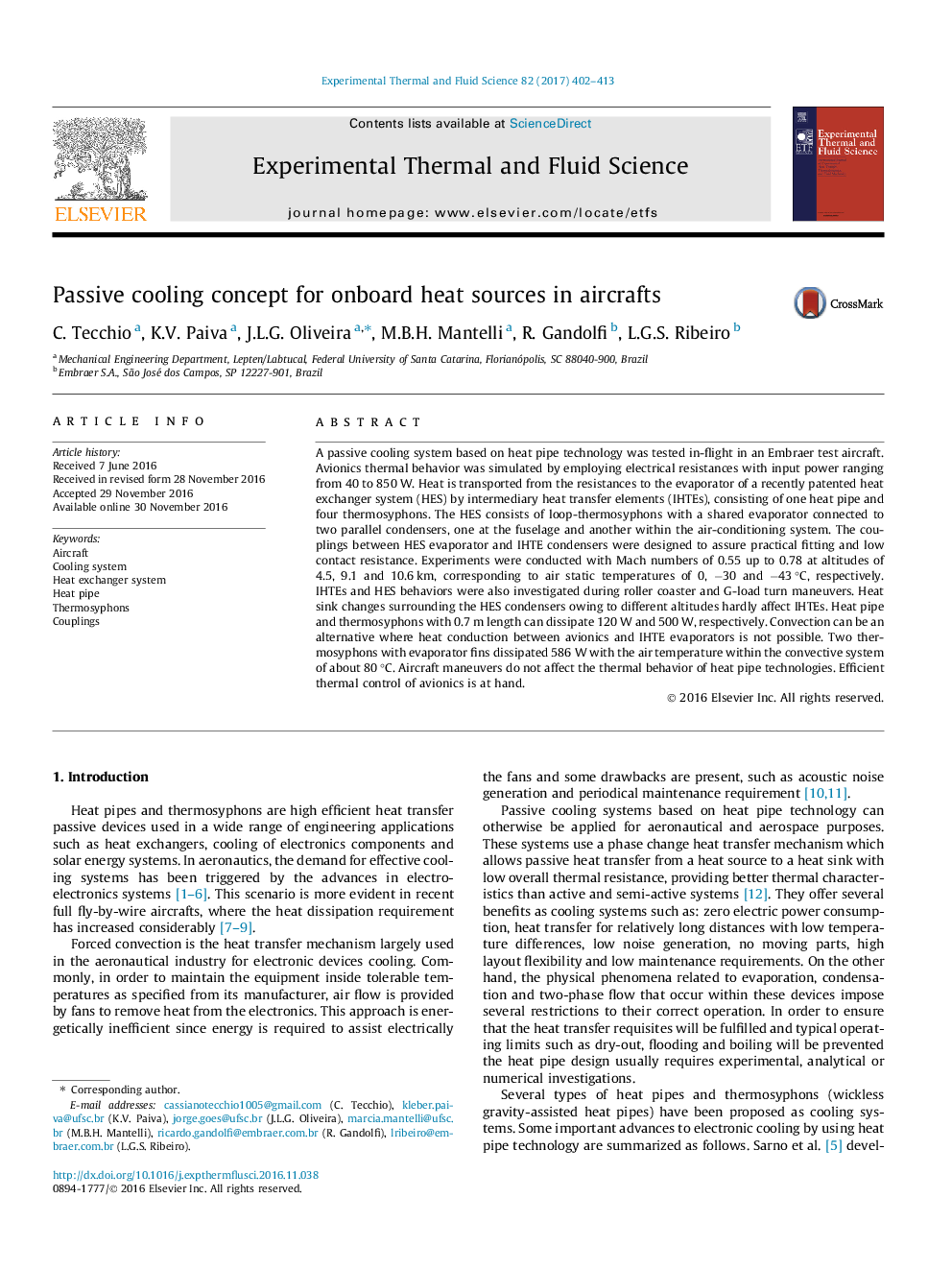| Article ID | Journal | Published Year | Pages | File Type |
|---|---|---|---|---|
| 4992782 | Experimental Thermal and Fluid Science | 2017 | 12 Pages |
Abstract
A passive cooling system based on heat pipe technology was tested in-flight in an Embraer test aircraft. Avionics thermal behavior was simulated by employing electrical resistances with input power ranging from 40 to 850 W. Heat is transported from the resistances to the evaporator of a recently patented heat exchanger system (HES) by intermediary heat transfer elements (IHTEs), consisting of one heat pipe and four thermosyphons. The HES consists of loop-thermosyphons with a shared evaporator connected to two parallel condensers, one at the fuselage and another within the air-conditioning system. The couplings between HES evaporator and IHTE condensers were designed to assure practical fitting and low contact resistance. Experiments were conducted with Mach numbers of 0.55 up to 0.78 at altitudes of 4.5, 9.1 and 10.6 km, corresponding to air static temperatures of 0, â30 and â43 °C, respectively. IHTEs and HES behaviors were also investigated during roller coaster and G-load turn maneuvers. Heat sink changes surrounding the HES condensers owing to different altitudes hardly affect IHTEs. Heat pipe and thermosyphons with 0.7 m length can dissipate 120 W and 500 W, respectively. Convection can be an alternative where heat conduction between avionics and IHTE evaporators is not possible. Two thermosyphons with evaporator fins dissipated 586 W with the air temperature within the convective system of about 80 °C. Aircraft maneuvers do not affect the thermal behavior of heat pipe technologies. Efficient thermal control of avionics is at hand.
Related Topics
Physical Sciences and Engineering
Chemical Engineering
Fluid Flow and Transfer Processes
Authors
C. Tecchio, K.V. Paiva, J.L.G. Oliveira, M.B.H. Mantelli, R. Gandolfi, L.G.S. Ribeiro,
